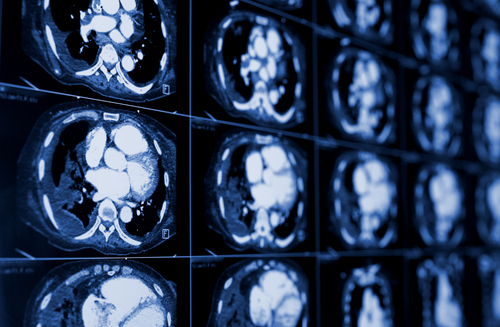First of its kind: Peering into the heart without touching
University of Houston News Feb 21, 2018

As the leading cause of death in the US, heart disease also occupies the minds of great researchers, who continue to develop breakthroughs to advance treatments and science.
That includes University of Houston professor of biomedical engineering Kirill Larin who has developed what he describes as a “frontier technology” that can immediately assess if heart medicine is working and scar tissue healing following a heart attack.
No biopsies needed, no invasive measures taken. Larin simply peers into the heart using high-resolution optical coherence tomography (OCT), a noninvasive imaging test that uses light waves to take cross-section pictures, usually of the retina. Larin has focused the machine on the heart, a method called optical coherence elastography (OCE), to deduce mechanical properties of tissue. It’s a new field he helped usher in over the past few years.
With Larin at the controls, OCT captures detailed biomechanical properties of heart tissue to determine if the organ is responding to therapies. It could eventually be used to develop and test new treatments for healing the damage after a heart attack. The work was described in the Optical Society journal Biomedical Optics Express.
“For the first time ever, without touching the heart, now we can measure its properties and scar tissue,” said Larin. The National Institutes of Health gave Larin and colleague James F. Martin from Baylor College of Medicine and the Texas Heart Institute more than $2 million to continue exploring the science.
Most prominent under the OCE lens is a heart’s scar tissue, marking the first application of OCE for high-resolution mapping of mechanical properties of the heart muscle.
After the heart attack
Usually due to a blocked blood supply, a myocardial infarction, or heart attack, either damages or kills a part of the heart muscle, the myocardium.
While there is currently no cure for the scar tissue that occurs following a heart attack, Martin’s group is working on ways to stimulate adult heart tissue to repair itself. But when it came to the mechanics of examining the heart, the group turned to Larin.
“Through our method to measure the heart’s mechanical properties, we hope to develop ways to regenerate heart tissue,” said Larin.
The OCE also delivers clues to refining the current state of treatment.
“We can see immediately if we should be applying treatment once or twice a day, or once a week. Our results are that immediate,” said Larin.
-
Exclusive Write-ups & Webinars by KOLs
-
Daily Quiz by specialty
-
Paid Market Research Surveys
-
Case discussions, News & Journals' summaries
